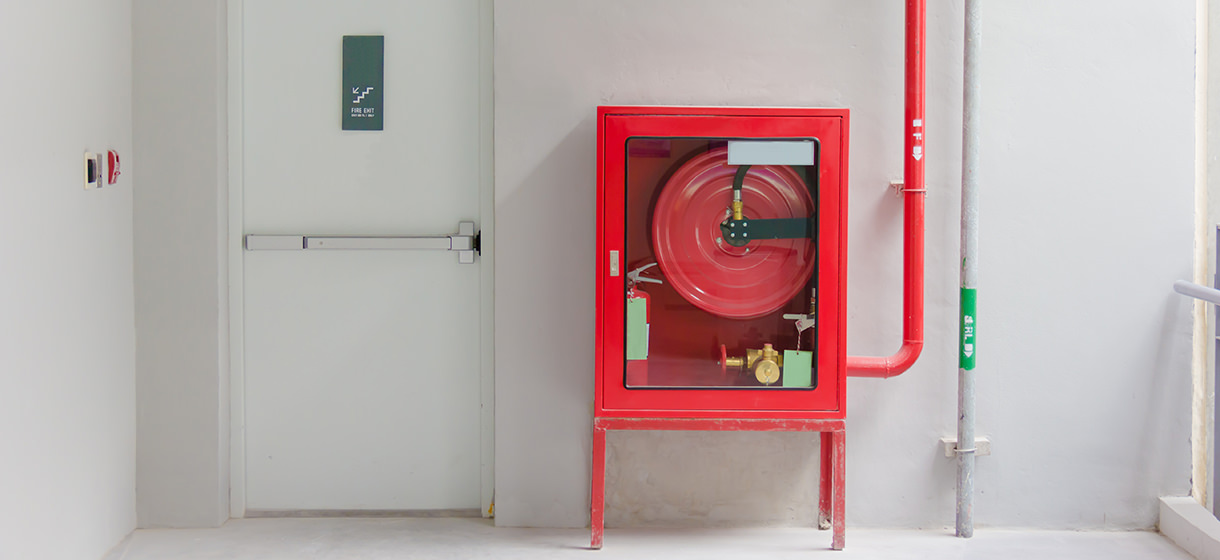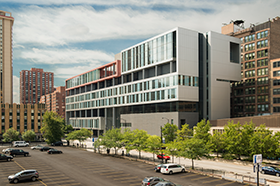
When considering life safety aspects of a building, designers will frequently turn to the National Fire Protection Association (NFPA) 101, Life Safety Code (LSC). Even when it is not adopted as code by local authorities, NFPA 101 provides an industry standard baseline for minimum life safety requirements. The primary focus of the LSC is to minimize the danger to life from the effects of fire – including smoke, heat, and toxic gases – by addressing requirements for features of construction, protection, and occupancy. While means of egress is a large component, life safety design is not only an architectural task and there are many elements that must be engineered such as fire alarm, fire suppression, and smoke control systems. Designing a safe building is a team effort.
Often, there are instances where conditions may pose a challenge to strict compliance with the LSC. If such an issue arises involving an educational, business, health care, board and care, or detention and correctional occupancy, designers can apply the Fire Safety Evaluation System (FSES) to demonstrate equivalent level of life safety compared to the LSC. The FSES is published as NFPA 101A: Guide on Alternative Approaches to Life Safety. Each edition of NFPA 101A corresponds to a specific edition of NFPA 101 to ensure that as the LSC is modified, the FSES remains a reliable method of determining equivalence.
What is the Fire Safety Evaluation System?
The FSES is an index method in which a building’s features are scored on a zone-by-zone basis to calibrate factors that contribute to life safety and those that are a detriment. As an example, combustible construction types or long dead end corridors are scored at varying levels of negative points, whereas the presence of sprinkler systems or smoke detection earn positive points.
What is the Process?

Each occupancy type included in the FSES has a separate worksheet tailored to the individual challenges present and a mandatory number of points required based on the number of stories and whether the building is new or existing. In health care and board and care occupancies the patients’ and residents’ ability to move and egress independently is a risk that is scored and contributes to a zone or building’s overall life safety score. Other items such as corridor and door ratings, smoke detection and control, interior finishes, fire and sprinkler systems are safety parameters that are factored into the score. These risk and safety factors are then compared to the mandatory minimum point requirement.
Weighing Possible Solutions
Once each zone is evaluated, the FSES clarifies the relative impact of a deficiency or proposed improvement. In this manner, owners and designers can determine the most impactful and budget-conscious solutions to improve the life safety of a building. For instance, if a health care occupancy has doors with less than 20- minute fire protection rating (FPR), upgrading those doors to 20 minutes or greater FPR will earn one additional point. If a door with a 20-minute FPR costs $500 installed and the average patient room is 200-square-feet, this point might cost an owner approximately $2.50 per square foot. If an automatic sprinkler system was installed throughout that building at a cost of approximately $5.00 per square foot, ten points would be earned, making each point $0.50 a square foot.
Now, the previous situation is a hypothetical example, but it illustrates the powerful tool that the FSES can be when determining a life safety solution for a building. Perhaps the building owner is only a few points from being equivalent to the LSC and the minimal disruption of installing doors compared to sprinklers allows for business continuity that is more valuable to their business and patients. Conversely, the FSES might have illustrated that the building was very deficient and that an automatic sprinkler system was a great value for the significant increase in life safety. In either case, the FSES is able to provide a comprehensive method to compare the effectiveness and value of proposed improvements. By assigning a clear value to building features, the gain in life safety achieved for each improvement can be easily determined. If you have any questions or need help solving your life safety challenges, please contact Amanda Beck Larkin.







 Amanda Beck recognized as CSE 40 Under 40
Amanda Beck recognized as CSE 40 Under 40 







